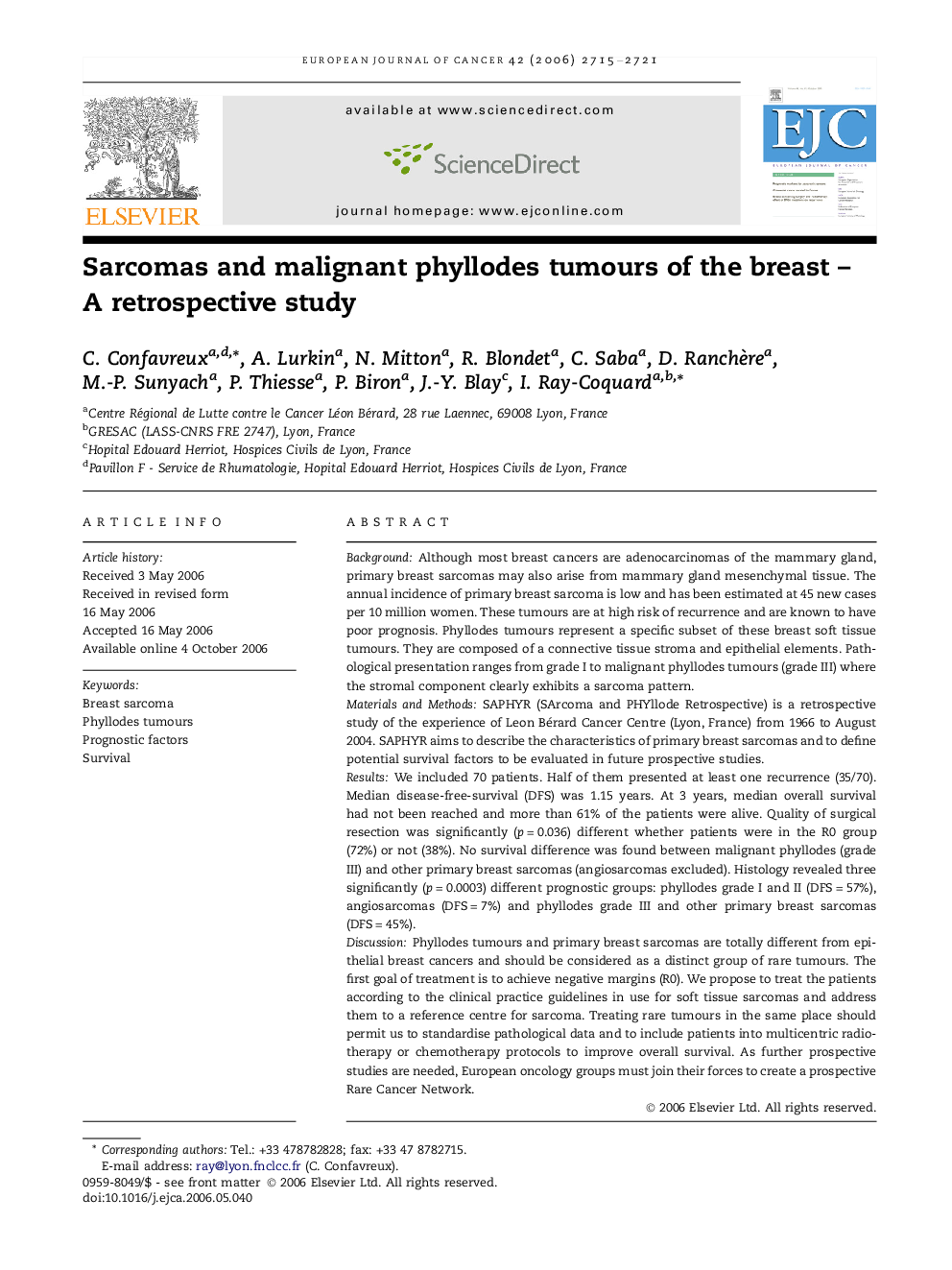| Article ID | Journal | Published Year | Pages | File Type |
|---|---|---|---|---|
| 2126194 | European Journal of Cancer | 2006 | 7 Pages |
BackgroundAlthough most breast cancers are adenocarcinomas of the mammary gland, primary breast sarcomas may also arise from mammary gland mesenchymal tissue. The annual incidence of primary breast sarcoma is low and has been estimated at 45 new cases per 10 million women. These tumours are at high risk of recurrence and are known to have poor prognosis. Phyllodes tumours represent a specific subset of these breast soft tissue tumours. They are composed of a connective tissue stroma and epithelial elements. Pathological presentation ranges from grade I to malignant phyllodes tumours (grade III) where the stromal component clearly exhibits a sarcoma pattern.Materials and MethodsSAPHYR (SArcoma and PHYllode Retrospective) is a retrospective study of the experience of Leon Bérard Cancer Centre (Lyon, France) from 1966 to August 2004. SAPHYR aims to describe the characteristics of primary breast sarcomas and to define potential survival factors to be evaluated in future prospective studies.ResultsWe included 70 patients. Half of them presented at least one recurrence (35/70). Median disease-free-survival (DFS) was 1.15 years. At 3 years, median overall survival had not been reached and more than 61% of the patients were alive. Quality of surgical resection was significantly (p = 0.036) different whether patients were in the R0 group (72%) or not (38%). No survival difference was found between malignant phyllodes (grade III) and other primary breast sarcomas (angiosarcomas excluded). Histology revealed three significantly (p = 0.0003) different prognostic groups: phyllodes grade I and II (DFS = 57%), angiosarcomas (DFS = 7%) and phyllodes grade III and other primary breast sarcomas (DFS = 45%).DiscussionPhyllodes tumours and primary breast sarcomas are totally different from epithelial breast cancers and should be considered as a distinct group of rare tumours. The first goal of treatment is to achieve negative margins (R0). We propose to treat the patients according to the clinical practice guidelines in use for soft tissue sarcomas and address them to a reference centre for sarcoma. Treating rare tumours in the same place should permit us to standardise pathological data and to include patients into multicentric radiotherapy or chemotherapy protocols to improve overall survival. As further prospective studies are needed, European oncology groups must join their forces to create a prospective Rare Cancer Network.
